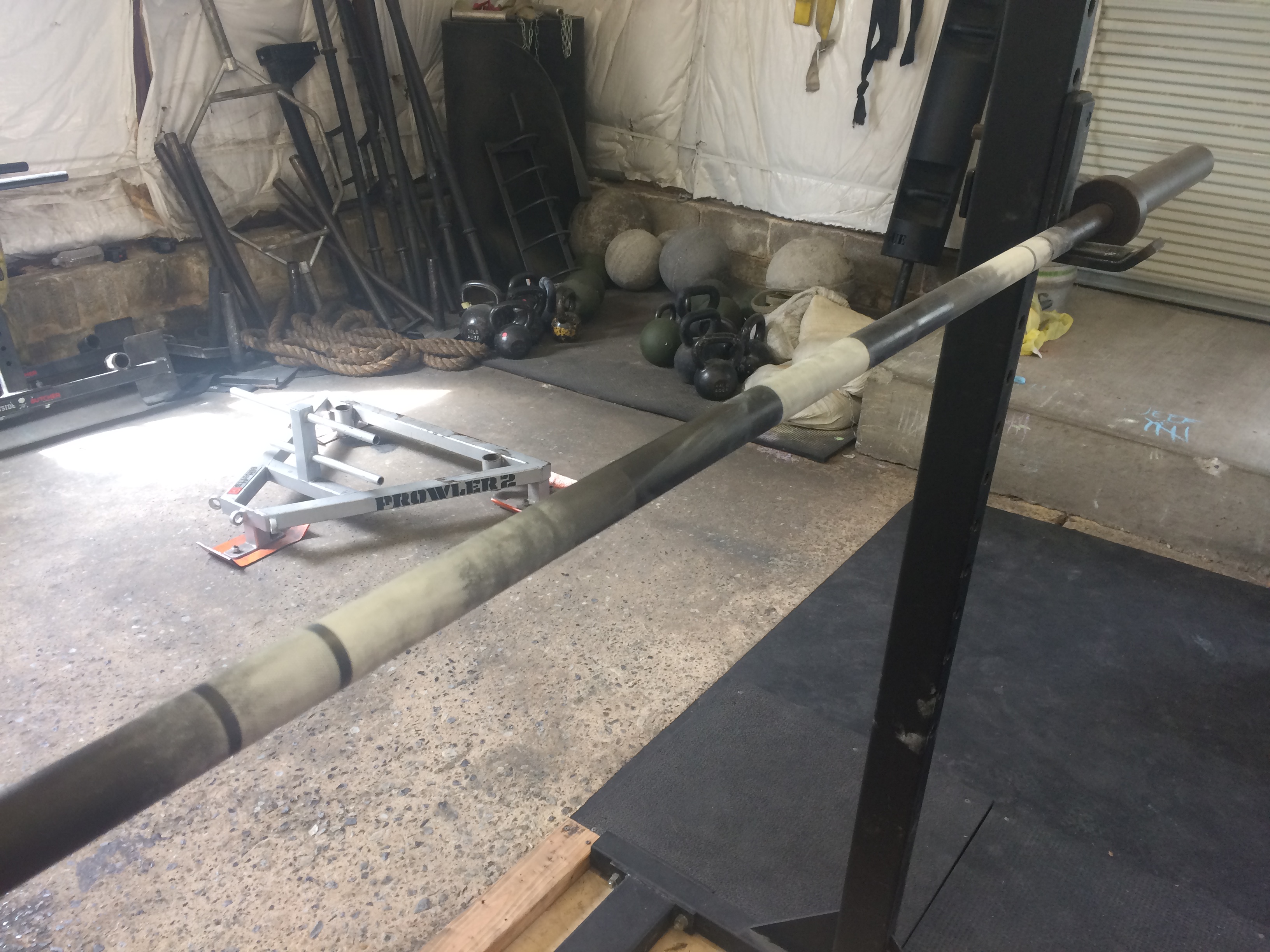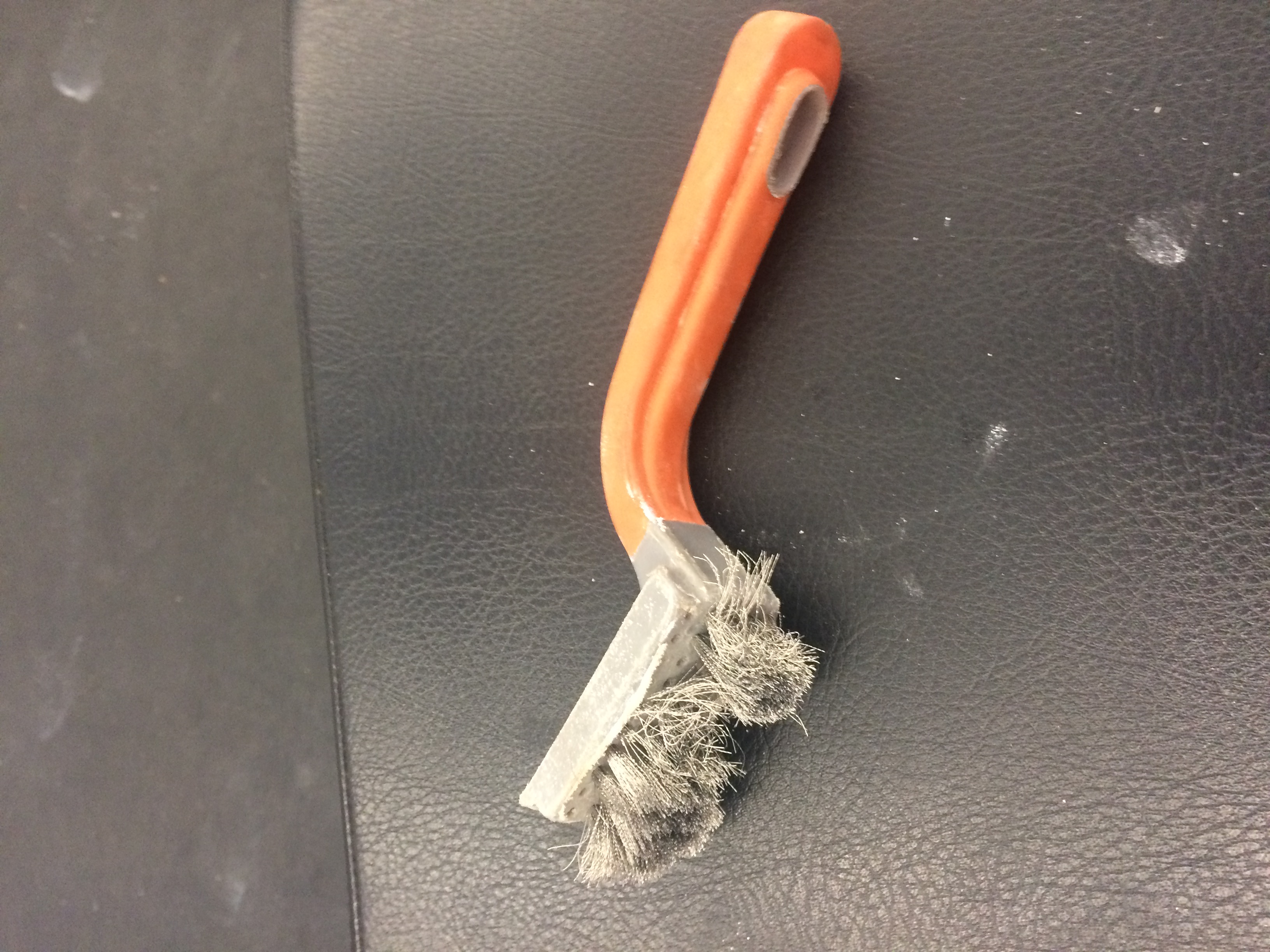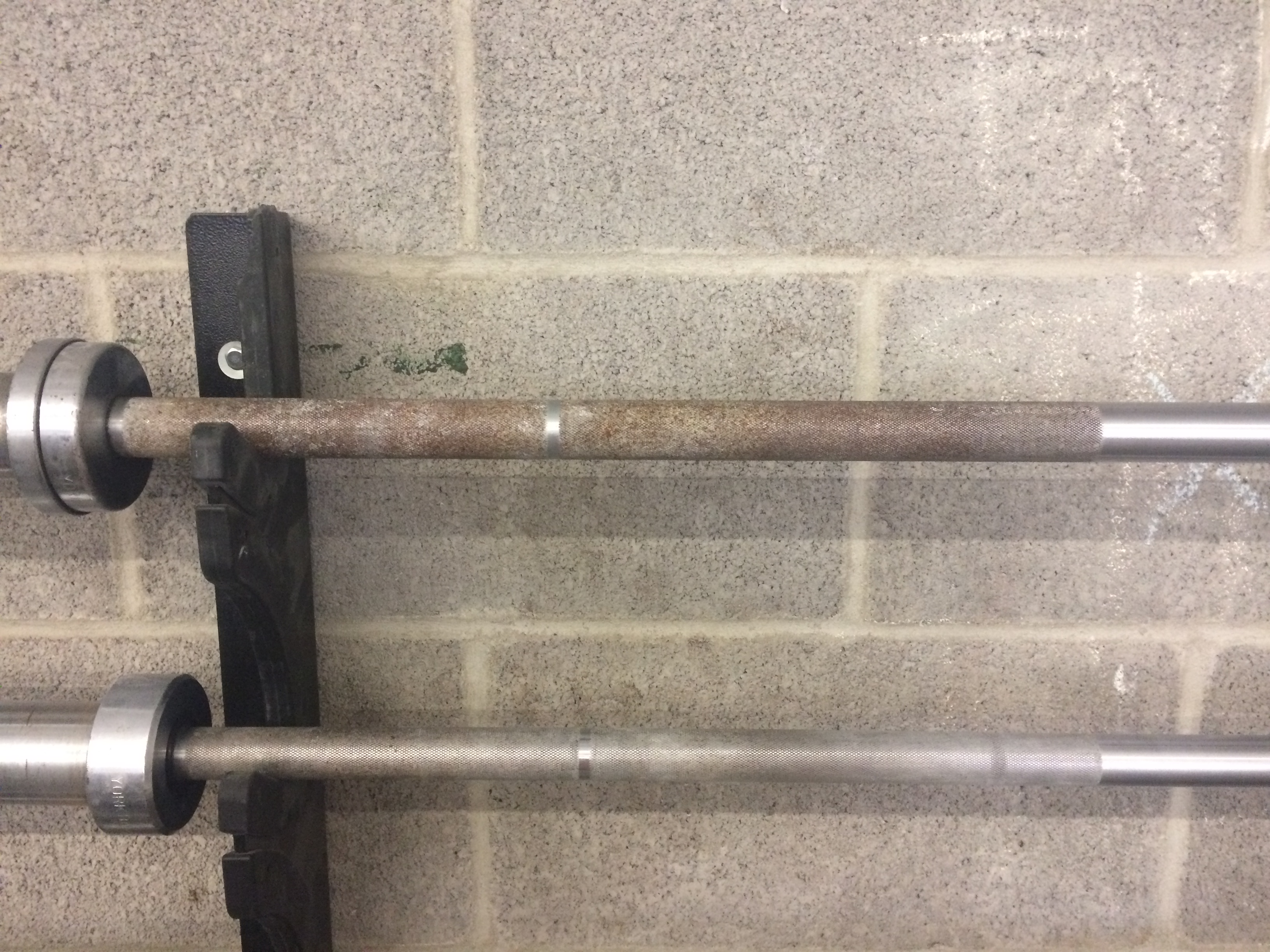Chalk is something a lot of people take advantage of, but nobody ever really stops to think about why it works, or if they’re using too much.

Nearly everyone has seen this sight at some point. You walk into the gym and claim your rack, only to find that the bar sitting there has been attacked by a chalk monster. Now, I’m all for chalk. It is 100% necessary if you’re going to take your training seriously. But similar to training volume more is not always more, and you need to clean up after yourself if you are going to use it.
Let’s think for a minute what the role of chalk in a gym is. When your hands are sweaty chalk is used as a drying agent to keep your hands from slipping on the bar. This is imperative while lifting heavy, especially here in the humid Maryland summer. However, there is a point at which more chalk will impede your progress.

The above photo is a picture of a B&R bar’s knurling, or the grippy part that’s etched into the steel. Every bar’s knurling is a little different, but the idea remains the same. The rough surface helps you grip the bar much better than if it were simply a piece of smooth steel. This is not always enough, however. Sweaty hands create a grip problem, especially during heavy deadlifts, cleans, snatches, or chinups. This is where chalk helps by absorbing some of the moisture present on your hands. In general, less moisture = a better grip.
So how much chalk is too much chalk? Once your hands are dry, any extra chalk beyond that is simply filler. And by that I mean it’s literally filling in the knurling in the bar. Zoom in on the picture at the top of this post of the bar filled with chalk, and you’ll see that it’s actually more smooth than a bar without chalk. This is because all that extra chalk fills in the pattern on the knurling that would otherwise be used to give you a better grip. So extra chalk actually makes it harder to grip the bar.
Now that that’s settled, how do we clean up after ourselves after we use a responsible amount of chalk? A wire brush is what we use for removing the chalk that remains stuck in a bar’s knurling. Here is an example of one of the ones we have sitting around the gym.

Why clean the chalk out of a bar anyway? Remember the role of chalk – it absorbs moisture. Anyone who knows cars will draw an analogy to leaving mud on the bottom of your car. The mud holds moisture close to the body of the car, which over time can make the metal rust more quickly (especially if you have lots of scratches and peeling paint). In the same light, if chalk is left on a bar the moisture that it holds ends up making that bar rust.
The two bars below are perfect examples of this. Both are weightlifting bars purchased at roughly the same time. The York bar at the top could have used a little more after-workout care. The bar below it, another York weightlifting bar with a fairly similar knurling, shows how a bar should look even after years of regular use.

If you’re spending good money on a bar (you should – a barbell is not the place to skimp on money), you want to take care of your investment. So next time you lift, don’t go crazy with the chalk. And what you do use, clean up. It’ll turn your bar from a 2-year disappointment into a lifetime investment.
Tags: barbells, chalk
1 thought on “How To Keep Your Bar Looking Fresh”